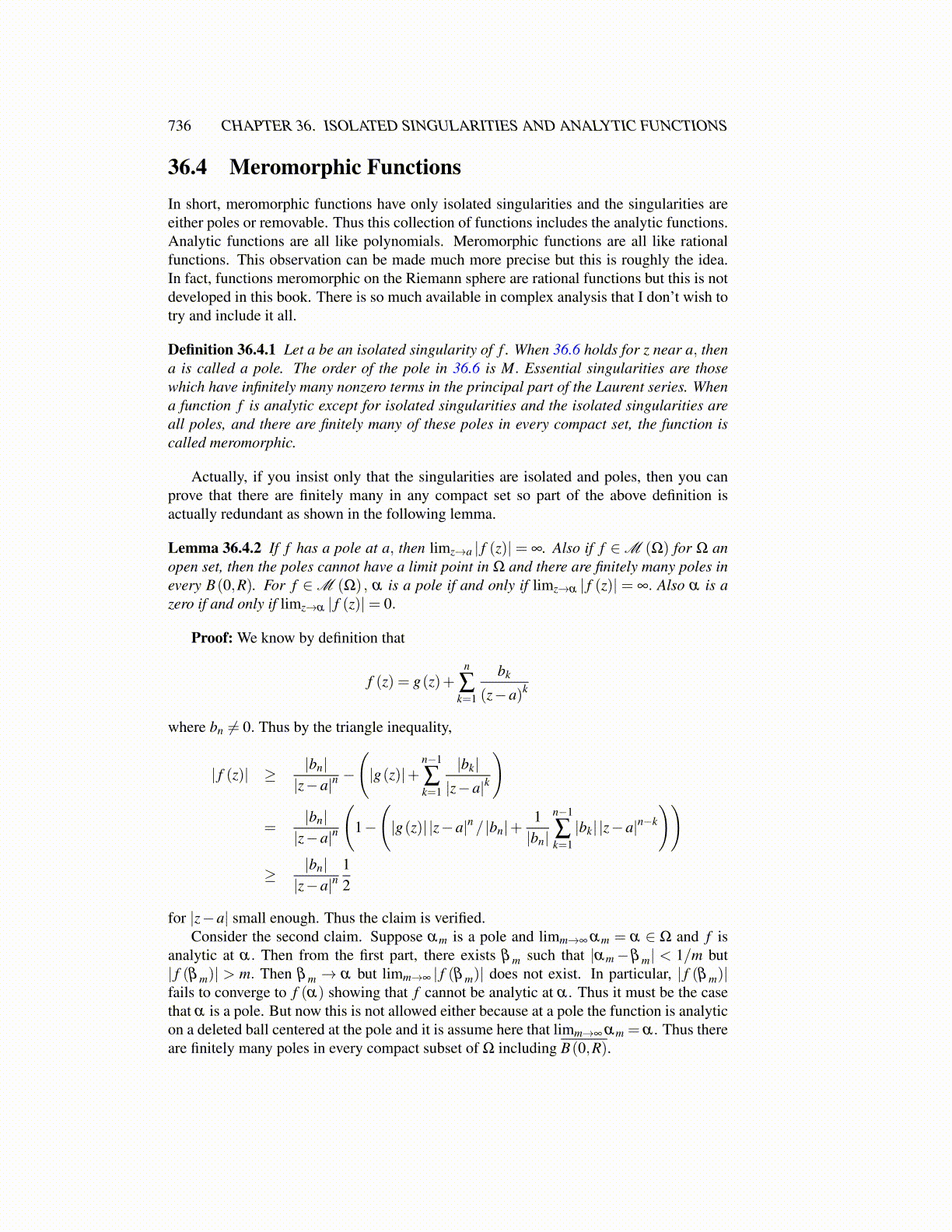
736 CHAPTER 36. ISOLATED SINGULARITIES AND ANALYTIC FUNCTIONS
36.4 Meromorphic FunctionsIn short, meromorphic functions have only isolated singularities and the singularities areeither poles or removable. Thus this collection of functions includes the analytic functions.Analytic functions are all like polynomials. Meromorphic functions are all like rationalfunctions. This observation can be made much more precise but this is roughly the idea.In fact, functions meromorphic on the Riemann sphere are rational functions but this is notdeveloped in this book. There is so much available in complex analysis that I don’t wish totry and include it all.
Definition 36.4.1 Let a be an isolated singularity of f . When 36.6 holds for z near a, thena is called a pole. The order of the pole in 36.6 is M. Essential singularities are thosewhich have infinitely many nonzero terms in the principal part of the Laurent series. Whena function f is analytic except for isolated singularities and the isolated singularities areall poles, and there are finitely many of these poles in every compact set, the function iscalled meromorphic.
Actually, if you insist only that the singularities are isolated and poles, then you canprove that there are finitely many in any compact set so part of the above definition isactually redundant as shown in the following lemma.
Lemma 36.4.2 If f has a pole at a, then limz→a | f (z)| = ∞. Also if f ∈M (Ω) for Ω anopen set, then the poles cannot have a limit point in Ω and there are finitely many poles inevery B(0,R). For f ∈M (Ω) , α is a pole if and only if limz→α | f (z)| = ∞. Also α is azero if and only if limz→α | f (z)|= 0.
Proof: We know by definition that
f (z) = g(z)+n
∑k=1
bk
(z−a)k
where bn ̸= 0. Thus by the triangle inequality,
| f (z)| ≥ |bn||z−a|n
−
(|g(z)|+
n−1
∑k=1
|bk||z−a|k
)
=|bn||z−a|n
(1−
(|g(z)| |z−a|n / |bn|+
1|bn|
n−1
∑k=1|bk| |z−a|n−k
))
≥ |bn||z−a|n
12
for |z−a| small enough. Thus the claim is verified.Consider the second claim. Suppose αm is a pole and limm→∞ αm = α ∈ Ω and f is
analytic at α. Then from the first part, there exists β m such that |αm−β m| < 1/m but| f (β m)| > m. Then β m → α but limm→∞ | f (β m)| does not exist. In particular, | f (β m)|fails to converge to f (α) showing that f cannot be analytic at α . Thus it must be the casethat α is a pole. But now this is not allowed either because at a pole the function is analyticon a deleted ball centered at the pole and it is assume here that limm→∞ αm = α . Thus thereare finitely many poles in every compact subset of Ω including B(0,R).